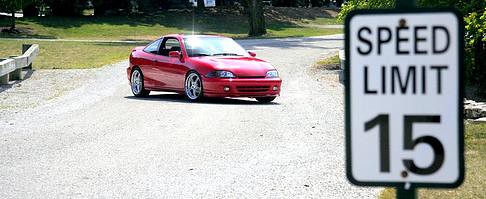my ballast one of my HID's went out today, after 8 month. The Ebay seller i originally bought them from claims to have a 14month warranty on their equipment. since i originally got the single 9007 kit (no Hi-beams) and was looking into a BI-Xenon HID kit as a replacement. has anyone purchased a set, and/or have any info on their reliability... i was looking into getting these...
nullhttp://cgi.ebay.com/ebaymotors/HID-CONVERSION-KIT-Bi-Xenon-9003-H4-9004-9007-H13-Hi-Lo_W0QQcmdZViewItemQQcategoryZ36476QQihZ009QQitemZ190145637801QQrdZ1QQsspagenameZWDVW
Well I'm not sure what the bulb looks like on this, but a true BI-Xenon uses a shield that goes up and down for high and low beams. This company has something that moves the bulb in the housing... Hmmm I would have to see this kit in the pics. I would like to see what they have that moves the bulb or anything. I wouldn't buy this kit if I was you. Just my .02

yeah so about the broken Ballast, i got pulled over last night for one headlight... and low and behold after i was done getting a warning. the ballast decided to work so i'll have to look into why it's occasionally failing... but yeah thanks the single HID is bright as hell, just looking for some way for hi's incase i ever find a dark country road/ highway
Well if you are wondering why sometimes after you stop and turn off the car and then leave in just a few mins why only one ones. The answer is that the 2000+ wiring is crap. Look up Dr Paul's wright up for better power wires and the use of a relay.


read this in a ebay auction its acutally good info
Quote:
There are many companies and private merchants out there that will advertise 7000K, 8000K, and even 12000K HID kits. Most of these vendors lurk around on e-bay, online car forums, websites, and ricer accessory shops. 100% of the people that buy these kits do so because they are uninformed, uneducated, or misguided in the field of lighting, and will buy these junk kits thinking two things: that these bulbs are brighter and/or that they will perform better. These are both untrue. Perhaps this misconception and frenzy for purple lights originates from BMW and Audi's infamous projector HIDs.
So here's the *real* low down... Philips is the number one manufacturer of HID bulbs. The Philips OEM D2S bulb is rated at 4100K at 12.8 volts and produces 3200 lumens of light. The Philips Ultinon D2S is 5800K at 12.8 volts and produces 2400 lumens of light. As you can see, with all other factors remaining constant, the brightness of an HID bulb declines the higher up the color index you go. Vision, a Korean bulb manufacturer, makes an 8000K bulb, which they used to advertise on Acura-Forums as 2000 lumens bright. This is barely a marked improvement over halogens, and will produce more glare and eye fatigue than it is beneficial. 4100K has been proven through tireless independant research by the Germans and Japanese to be the most functional, truest white and thus the brightest possible color temperature (ceteris paribus).
Every car manufacturer in the world (including BMW and Audi) uses none other than a standard 4100K gas-discharge bulb. The reason being is that 4100K is daylight white in color and produces the same color visible light as direct sunlight. This is least fatiguing functional color on the eyes and produces the most comfortable contrast on the road.
So the big question now is: Why do BMW and Audi lights appear blue when they use a white bulb?
Well, this coloration is the result of the light projectors; the lenses: it's transparency, it's curvature, the tiny grooves etched into it; the projector assembly, the shield, and the reflector bowl. All these components work together to produce a signature of light unique to that particular optic's design. On the Audi and BMW projectors, the lens curvature at the edge bends the white light producing a "prism effect". White light is broken down to it's fundemental colors. Since blue lights is high energy it is absorbed last and thus travels farther. So with this prism effect, you'll notice that BMW HIDs are only purple and blue from the sides, the top, and the bottom, but are always daylight white on the road and in the beam pattern. This phenomenon can be demonstrated when you watch an oncoming BMW hit a pothole or speedbump in the road and the car's nose pitches up and down. The headlights will flicker and "throw colors off", but returns to a solid-white beam pattern directly on the road.
Trying to emulate this color-flickering effect with a solid-state blue or purple bulb is only detrimental to lighting performance, but more importantly endangers motorists around you.........




